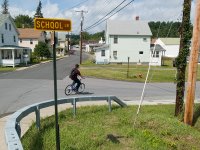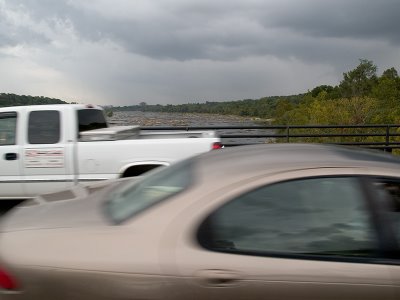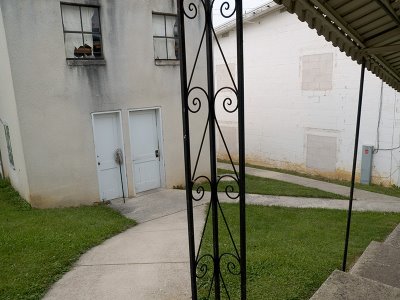

Waterbury, Connecticut





 Most recent cameras, film and digital, allow rapid sequence shooting. I think this may be a bug disguised as a feature. Even if you don’t set the camera to continuous shooting, and I never do, you know that you can hit the release again and get another exposure a fraction of a second after the first. I’ve been looking at these two pictures, made a couple weeks ago, and I can’t quite decide which works better.
Most recent cameras, film and digital, allow rapid sequence shooting. I think this may be a bug disguised as a feature. Even if you don’t set the camera to continuous shooting, and I never do, you know that you can hit the release again and get another exposure a fraction of a second after the first. I’ve been looking at these two pictures, made a couple weeks ago, and I can’t quite decide which works better. The first has more immediate impact, but the second has more complexity in the relationships. I keep wondering if, with only one chance, I might have done something a little better than either one.
The first has more immediate impact, but the second has more complexity in the relationships. I keep wondering if, with only one chance, I might have done something a little better than either one. This small city is a few miles from the Canadian border in a fertile agricultural strip just north of the great Adirondack forest. After I shot this abandoned storefront on the town’s main street, I noticed a new recruiting center, around the corner, on a side street. Maybe the whole building was put up for sale and all tenants were forced to move. The display windows at the new office were a bit more spiffy, without the stray pieces of tape, but used exactly the same recruiting posters.
This small city is a few miles from the Canadian border in a fertile agricultural strip just north of the great Adirondack forest. After I shot this abandoned storefront on the town’s main street, I noticed a new recruiting center, around the corner, on a side street. Maybe the whole building was put up for sale and all tenants were forced to move. The display windows at the new office were a bit more spiffy, without the stray pieces of tape, but used exactly the same recruiting posters.

 Vesuvius was the location for a very different kind of photograh exactly fifty years ago: one of O. Winston Link's elaborately staged pictorial illustrations of the steam railroad's final days. See the middle picture here. Look carefully at the upper left corner of that picture, at the wooden brace above the gas pumps. It supports a kind of porch roof along the front of a building. That building is still there, as you can see in this picture, made from the tracks facing back to where Link's camera must have been.
Vesuvius was the location for a very different kind of photograh exactly fifty years ago: one of O. Winston Link's elaborately staged pictorial illustrations of the steam railroad's final days. See the middle picture here. Look carefully at the upper left corner of that picture, at the wooden brace above the gas pumps. It supports a kind of porch roof along the front of a building. That building is still there, as you can see in this picture, made from the tracks facing back to where Link's camera must have been.












